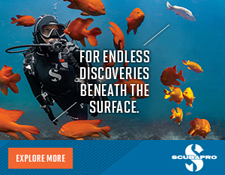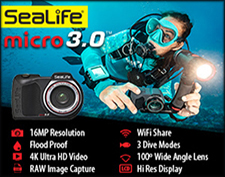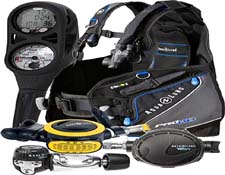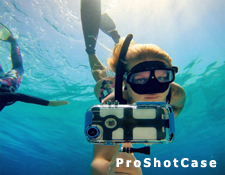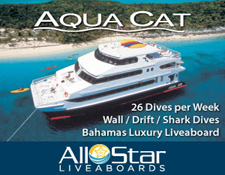Costa Rica

Costa Rica's underwater wonders range from coastal coral reefs to offshore islands. Those varied
dive spots contain diverse and beautiful marine life that includes giant manta rays, timid sea turtles,
colorful angel fish, intricate coral formations, psychedelic sea slugs, spiny puffer fish, delicate sea
fans, curious dolphins and, on rare occasions, whales.
Though the country's waters contain enough
marine life to please the most experienced of
divers, you need be little more than a curious
swimmer to catch a glimpse of some of its
underwater sights, since there are plenty of
spots that are perfect for snorkeling. Costa Rica
is also an excellent place to learn how to scuba
dive, since most dive centers offer inexpensive
certification courses in English that can be
completed in less than a week.
Caribe
There are several excellent snorkeling areas along the southern Caribbean coast. The country's
largest coastal reef is protected within Cahuita National Park, south of the town of the same name,
where you can rent snorkeling equipment and hire people to take you out in boats. The point at
Puerto Viejo, south of Cahuita, also has a coral reef wrapped around it that makes for convenient
diving. Punta Cocles and Punta Uva, two points to the south of town, have healthier coral
formations with plenty of fish around them. Manzanillo, a small fishing village a few miles further
south, also has some decent diving off shore. There are also a few good dive spots near the city of
Limon, such as the water surrounding Uvita Island. The best visibility in the Caribbean is from
March to early May and from mid August to mid November, but water quality can change from day
to day.
Pacific
The Pacific has the country's best diving, with less coral, but plenty of big fish. The most popular
Pacific diving area is the northwest, where dive centers in Playa del Coco, Ocotal and Hermosa
offer trips to several spots in the Culebra Bay and the Bat Islands (Islas Murcielagos), to the
northwest, where divers often see sharks and manta rays. The dive center in Flamingo usually takes
people to Santa Catalina Island, about five miles off shore, which is another good spot to see sharks
and other big fish. The best visibility and water temperatures in the northwest are found from June to
September, though the conditions can change from day to day.
There is good snorkeling in Curu National Wildlife Refuge, and near the beach resorts of Tambor
and Montezuma. There is also usually good snorkeling off the second beach in Manuel Antonio
National Park, and around the points and islands between Dominical and Marino Ballena National
Park. However, the best diving off the Pacific coast is found at several underwater reefs near Caño
Island, which can be explored on dive trips offered by some of the lodges in nearby Drake Bay.
Contrary to the northwest, the best visibility in the waters around Caño occurs during the dry
season, though the water tends to be pretty clear year round.
Cocos
Cocos Island, a national park located some 330 miles southwest of the Costa Rican mainland, has
the country's best diving by far. While the Island is covered with virgin forest, the ocean that
surrounds it contains abundant marine life, and the visibility is good year round. Divers at Cocos
Island regularly see such impressive animals as manta rays, dolphins and hammerhead sharks, which
sometimes gathering in schools of 30 or 40 animals. It takes about 36 hours to reach Cocos Island,
and some companies have ships that run regular dive cruises there, which last ten days and include
three dives per day.
No matter what adventure you crave, you’ll find it in Costa Rica — both topside and underwater. Try speeding through the rainforest canopy on a zip line or scuba diving with bull sharks. Bordered by the Pacific Ocean and the Caribbean Sea in the heart of Central America, Costa Rica is a prime ecotourism destination and boasts some of the world’s most biologically diverse habitats – including rainforest, volcano and mangrove ecosystems. While the Caribbean coast has yet to develop a serious scuba diving infrastructure, diving off the Pacific Coast is nothing short of spectacular. The underwater volcanic rock formations and pinnacles are home to small hard corals, sponges and gorgonians. Guanacaste is a giant bay off the northwest coast that provides access to Catalina and Bat Islands – key dive areas. The southern area is a protected biological reserve and offers the chance to see rays, turtles, and white-tip reef sharks. Plus, you’ll see large schools of fish swimming overhead on almost every dive. You can also get out to Cocos Island off the Pacific coast to dive with its hammerhead shark schools, whale sharks and manta rays.
Great Dives
Cocos Island – Because reaching Cocos Island National Marine Park requires a lengthy boat trip, most divers visit on a liveaboard dive vessel. Besides the pelagic species – marlin, sailfish, rays and sharks – that are drawn to the area, you’ll find more than 25 endemic fish species, including the red-lipped batfish. Whales also use the Cocos Island seamount as a place to congregate and calve.
Caño Island – Expect to find a large number of reef fish species on the pinnacles and coral reef that surround the island. You’ll also likely see bigger creatures such as manta rays, free-swimming moray eels and sharks. Mammals, such as orcas, dolphins, humpback and pilot whales are known to cruise through.
Catalina Islands – The unique underwater structure is what draws divers to these islands. Look for arches and caves, plus vibrant coral growing on the volcanic rock formations. You may see several different kinds of rays and sharks as well as sea turtles.
Big Scare, Bat Island – What better way to get your heart racing then by diving with bull sharks? You’ll also have the chance to spot other large pelagics like manta rays, sailfish and the occasional whale or dolphin. This dive site drops to more than 30 metres/100 feet and can have a strong current. It is best suited for advanced divers.
Virador – This volcanic island acts like a magnet to sea life. There’s a shark cave at 10 metres/33 feet and frequently there are large stingrays and white-tipped reef sharks at 22 metres/70 feet. You’ll also see huge schools of grunts, snapper, king angelfish and sergeant majors.
Tortuga Islands – There are three shipwrecks to visit off the Tortuga Islands. The Franklin Chang Diaz and Coronel Alfonso Monge were both Coast Guard ships that now lie comfortably below the surface within scuba diving depths. Nearby, the Caroline Star, sits a little deeper at 30 metres/100 feet and is home to white-tip reef sharks and a variety of tropical fish.
Dive Summary
Visibility – Depending on the area, visibility usually ranges from 15-30 metres/50-100 feet. June through September generally brings the best visibility.
Water Temperature – Generally ranges from 26-29ºC/78-84ºF. From December through March, cooler currents bring water temperatures as low as 19ºC/68ºF along with large animals such as humpback whales, pilot whales, giant manta rays, whale sharks, and more.
Weather – Seasonal air temperature averages vary widely and with altitude, but in general, along the coasts, it’s 27°C/82°F in winter and 33°C/92°F in summer. The dry season is from December to April and the rainy season runs from May to November. Rain can be expected in the afternoons, with the mornings usually sunny. Diving is good all year.
Featured Creatures – You’ll find eagle rays, turtles, manta rays, white-tipped reef sharks, bull sharks, enormous schools of both grunts and jacks, parrotfish, moray eels, dolphin and more. During whale season (January, February and March) you can hear the haunting songs of humpback and pilot whales underwater. You can also see humpbacks in June and July as they migrate from the southern hemisphere.
Recommended Training – Take the PADI Deep Diver and Drift Diver courses to be prepared for the pinnacle and seamount dives in Costa Rica. The AWARE – Coral Reef Conservation and the AWARE – Fish Identification courses will help you appreciate the many marine protected areas.
Source: PADI
|
















